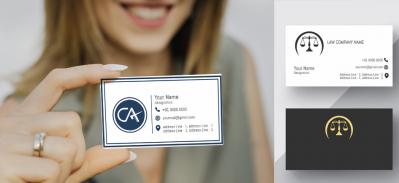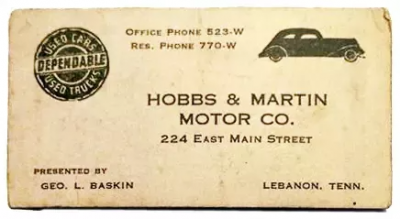Advocate Visiting Cards Examples: Inspiration for Legal Professionals
Advocate Visiting Cards Examples: Inspiration for Legal Professionals
The world of law is often associated with tradition and formality, and this holds even in the seemingly simple matter of advocate visiting cards. An advocate visiting card is not merely a piece of paper with contact information; it's a powerful tool that reflects your professionalism, expertise, and the image of your legal practice. In this blog, we'll explore some inspiring advocate visiting card examples to help legal professionals, attorneys, and lawyers create designs that leave a lasting impression.
The Importance of a Well-Designed Advocate Visiting Card
Before we dive into examples, let's reiterate why a well-designed advocate visiting card is crucial for legal professionals:
- Professionalism: A well-designed card conveys a sense of professionalism. It tells clients and colleagues that you take your legal practice seriously.
- Credibility: A thoughtfully designed card adds to your credibility. It implies that you pay attention to detail and present yourself in the best possible light.
- Memorability: A memorable card makes it easier for others to remember you and your contact information, which can be crucial in a field where networking is essential.
- Networking Tool: Advocate visiting cards serve as a tangible way to share contact details at meetings, conferences, and networking events, ensuring you stand out from the digital crowd.
Inspiring Advocate Visiting Card Examples
Here are some advocate visiting card examples to inspire your design:
1. Classic Elegance
This design exudes timeless elegance with its classic serif font, subtle gold accents, and an embossed emblem of justice. The use of a matte finish adds a touch of sophistication.
2. Modern Minimalism
Less is more in this advocate visiting card, with a clean white background, a simple logo, and sleek sans-serif fonts. The clever use of a transparent design element adds a modern touch.
3. Legal Icons
This card leverages legal icons like the scales of justice and the gavel to emphasize the advocate's expertise. The monochromatic color scheme keeps it sleek and professional.
4. Personal Branding
In this example, the advocate's branding is evident. The unique logo and distinctive color scheme set them apart and make their card instantly recognizable.
5. Double-Sided Impact
This advocate visiting card maximizes space by using both sides. On the front, it showcases essential contact information, while the back highlights the advocate's legal specialties and a testimonial from a satisfied client.
6. Sleek Black and White
This design takes a minimalist approach with a sleek black-and-white color scheme, simple typography, and a distinctive layout. The use of white space ensures information clarity.
7. Bold and Daring
For those who want to make a bold statement, this card uses strong, contrasting colors and unconventional design elements. The design reflects confidence and innovation.
8. Historical Nod
This advocate visiting card pays homage to legal history with its use of a quill and parchment design. It offers a sense of tradition while maintaining a clean and professional appearance.
9. Justice Served
In this example, the advocate's passion for justice shines through with a powerful image of the scales of justice. It's a strong visual statement that aligns with their legal focus.
- Subtle Texture
A textured background adds a layer of sophistication to this design. The subtle texture complements the minimalistic layout and typography.
Creating Your Advocate Visiting Card
Now that you've seen some inspiring examples, it's time to create your advocate visiting card. Here are some steps to get started:
- Define Your Brand: Think about what image you want to convey. Is it classic, modern, bold, or something else? Your brand identity will shape your design.
- Choose a Color Scheme: Select a color scheme that aligns with your brand and evokes the right emotions. Traditional colors like deep blues, blacks, and grays are often safe choices in the legal field.
- Typography: Opt for legible fonts. Serif fonts like Times New Roman or sans-serif fonts like Arial are solid choices. Ensure that the text is easy to read.
- Contact Information: Include your name, title (e.g., Attorney at Law), law firm name, phone number, email address, and physical address. Add your website, LinkedIn profile, or other relevant social media links if desired.
- Design Elements: Consider incorporating unique design elements that reflect your specialization or legal focus. Legal icons, symbols of justice, or a legal-focused tagline can add a distinctive touch.
- White Space: Don't overcrowd your card. Allow for ample white space to enhance readability and aesthetics.
- Paper Quality: Invest in high-quality printing and paper stock to ensure sharp text and accurate colors.
- Professional Printing: Opt for professional printing services to achieve the best results.
Conclusion
Your advocate visiting card is a representation of your legal practice, and its design should align with your professionalism and expertise. These inspiring examples showcase the diversity and creativity in advocate visiting card design, but the key is to create a card that is a reflection of you and your practice. By investing in a well-designed advocate visiting card, you can make a lasting impression and enhance your credibility in the legal profession. It's not just a piece of paper; it's a powerful tool that can open doors to new opportunities and connections.











